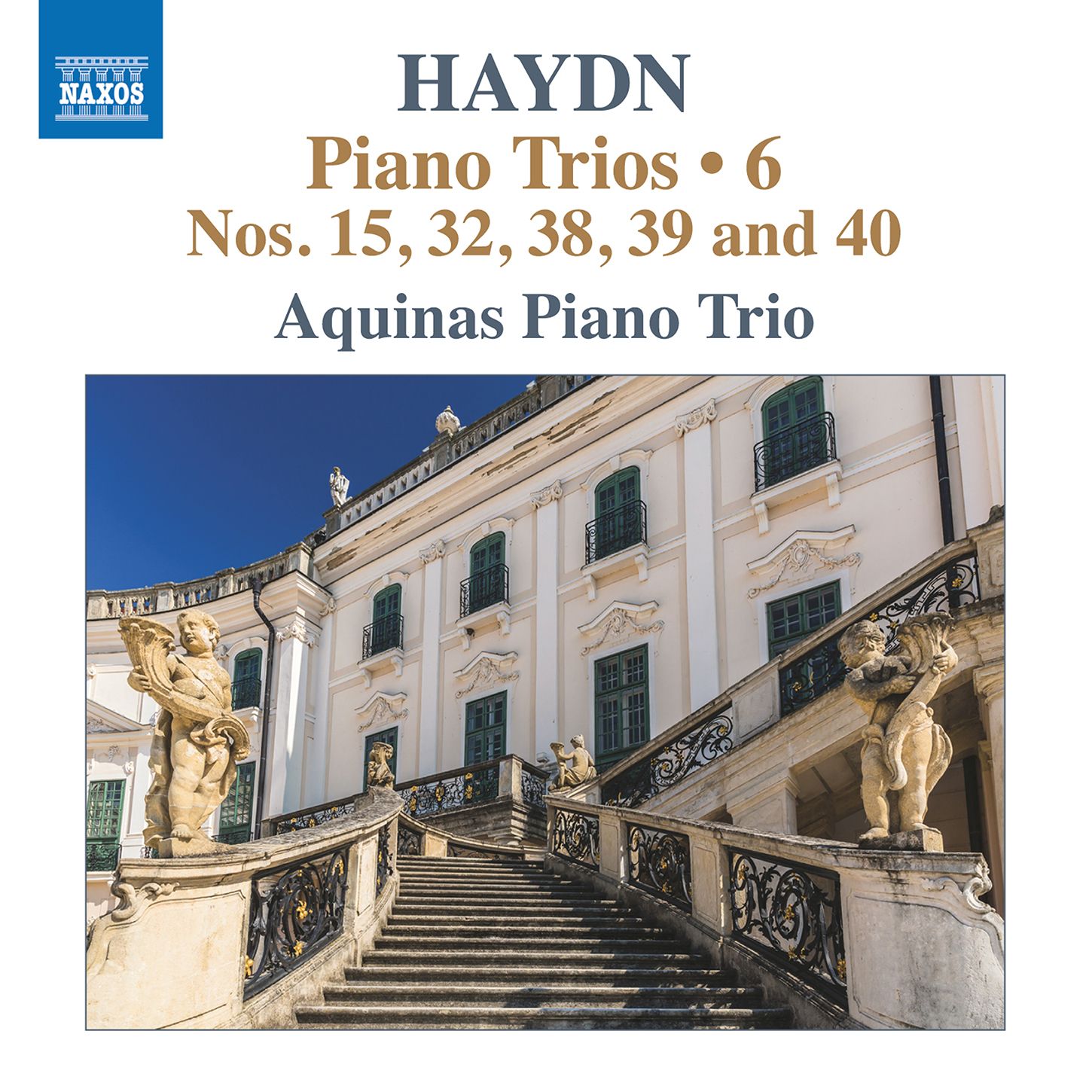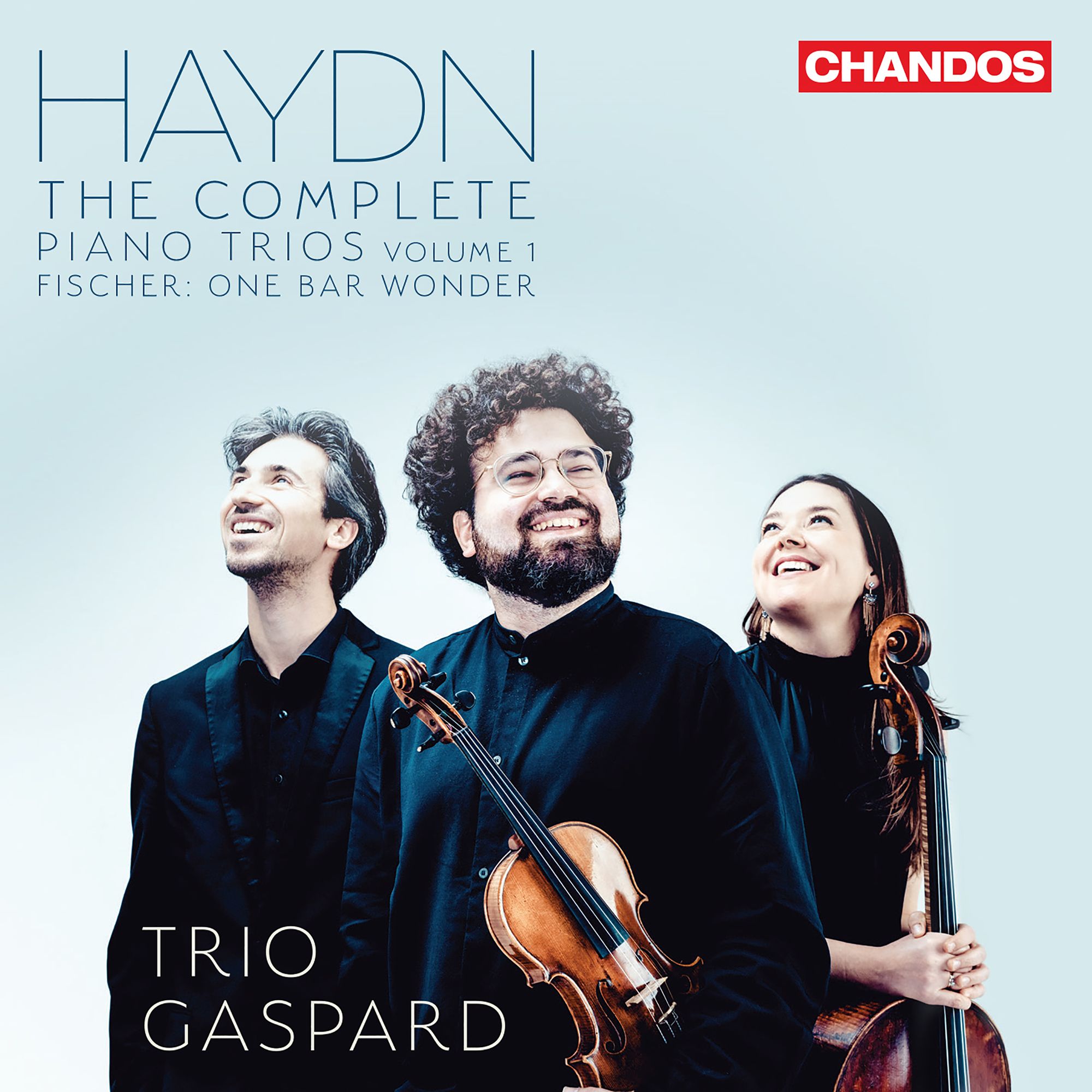A brace of Haydn Piano Trio discs: Chandos & Naxos

Not a single overlap, but two new discs of Haydn PIano Trios, both with much to recommend them.
Haydn's Piano Trios mark a couple of transitions in music history - from harpsichord to pianoforte, and the emergence of what we now know as sonata-allegro form.
The Naxos disc begins with the G-Major, Hob.XV:15 (Anthony von Hoboken was the name associated with Haydn's catalogue of musical works. It is split into volumes according to genre: XV is the piano trios, so all of the catalogue numbers on these discs begin with "XV" followed by the number within that volume. You can find out more here). The G-Major has an alternative scoring (wiith flute replacing violin). As so often in Haydn piano trios, the cello part is quite rudimentary; but the violin (Ruth Rogers) has plenty of dialogue with the piano (Martin Cousin, who was a finalist for the 2000 World Piano Competition but sadly was unwell for the final; his replacement, Antii Siirala, went on to win).
One can hear the core traits not only of Haydn's writing, but of the pure chamber music basis of the performance, in the first movement of this G-Major Trio:
Worth quoting the finale, too, for Martin Cousin's sterling fingerwork in the decorative passages; nimble, airy even and yet with each note delivered with a careful touch:
There's almost an aristocratic bent to the first movement of the B flat, Hob. XV:38 (published 1766), an Allegro moderato. It's a mood we find in some of teh Master's Piano Sonata first movements also; and it is continued in the Minuetto-Trio, which contains some lovely dark shadings:
Pretty much needless to say, these shadows are completely erased in the bright finale, delivered with pristine articulation from the Aquinas Piano Trio's pianist:
Interestingly in the case of this B flat “Divertimento,” Haydn offers an alternative in which the cello part may be omitted, to create a Sonata for Violin and Piano.
For a Piano Trio in G-Major, Hob. XV: 32 contains surprising drama, especially given the markedly gallant mode of its musical materials:
Interesting how each trio has something notable about it: try the strings of piano trills in the finale of the F-Major, Hob. XV:40:
Most of Haydm's Piano Trios are in two or three movements. Not the F-Major, Hob. XV:39, which boasts no fewer than five!. Most movements are arrangements of movements from Haydn's piano sonatas. It is a Divertimento really (we know it was written before 1767), and is all the more charming for it, nowhere more so than in the second movement Andante:
Intrigiongly, the tiny finale is marked "Scherzo"; it is certainly playful but not a scherzo as we post-Beethoven isteners might frame it. YouTube marks this as one of its "shorts"; so best to acces sit via this link.
It is possible the final Piano Trio (D-Major) is not by Haydn. It is not in the Hoboken catalogie and its date is unknown, but who would eant to be without this wonderfully wafting Andante finale:
... and so over to Chandos ...

Listening to the robust Chandos recording, nicely present, is to offer a substantive alternative. the Trio Gaspard is also on a voyage through the Haydn Piano Trios, and thsi is the first volume: here's the promotrailer from the issuing company:
The Trio Gaspard friends real sophistication and meaning in the first movement of the A-Major Trio, Hob. XV:18 (1794, which when it was published was Op. 70/1). I wonder if I am alone in hearing pre-echoes of early Beethoven in the development section?:
The movements of this trio, are slightly unbalanced, with the first movement's duration equlaling (almost exactly in this first Trio's case) the sum of the remaining two. Haydn - and the Trio Gaspard - still find space for loving epression in the central Andante of the A-Major (and tehre are some lovely textural moments, when the piano is accompanied by pizzicato strings):
The lead-in to the finale is delicious. And this finale is everything one expects from a Haydn piano trio - playful, yet masterly. Plus, what a sense of fun the Trio Gaspard bring!:
I do like Trio Gaspard’s almost symphonic approach to the D-Major Trio, Hob. XV:24 (Op. 73/1) from the very next year (1795), which allows for contrast within the confines of the home key's natural sunnyness. There is lyricism here, and sun-drenched optimism; but also undercurrents that make this movement a wonderful emotional ride:
The slow movement is, as Marc Vignal's notes suggest, almost a funeral procession; and that symphonic weight returns at times with the string interjections:
When it comes to the Trio, Hob.XV:26 (Op. 73/3; 1795), we move toteh rarefied (for the period) key of F sharp minor. Two previous works by Haydn shared this key: the Symphony No. 45 (the so-called “Farewell”) and the String Quartet, Op. 50/4 (1787). While perhaps the Chandos booklet's suggestion that Haydn's use of a diminshes seventh chord inthis music is “harrowing” goes a touch too far, this remains a fascinating piece. Here's that first movement:
The ornate second movememtn is beautifully done here; while the finale, a Tempo di Menuet - Adagio - [Tempo I] - Coda, is astonishingly inventive:
The Piano Trio in E flat, Op. 42/5 (Hob. XV:10, 1785) is one of those Haydn pieces that sounds effortless but hides a multitude of subtleties, all of which the Trio Gaspard seems to be aware. The D-Major, Op. 40/2 (Hob. XV:7) begins with a supremely invenive theme and variations. The Trio Gaspard’s performance makes one think they are discovering the music’s surprises for the first time, so fresh is its delivery:
The helter-skelter finale is an absolute joy.
The bonus on this disc is a conteporary piece by a composer born in 1981, Johannes Julius Fischer: the premiere recordings of one bar wonder (2021), subtitled ‘Hob. XV:7 remix,’ and is given as “Version A”. It takes the ritornello of the D-Major Trio's Andante, snipping out only the first couple of seconds and putting it on a loop which, as the repetitions carry on, adds extra, slightly bonkers effects; the piece can be performed either before or (as here) after the original, depending on what the composer calls “dramaturginal aim”. So you can play about with playing the above video either before or after this next one!:
